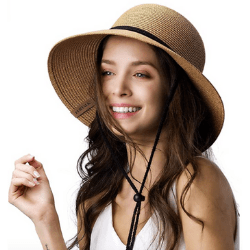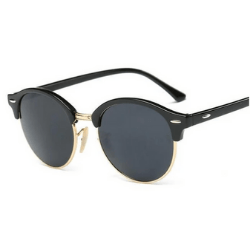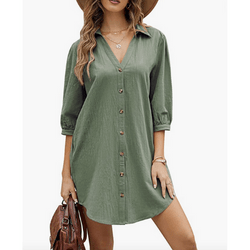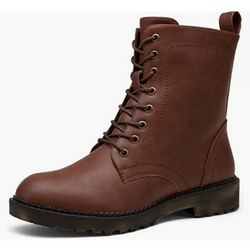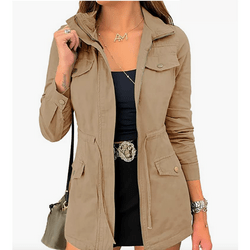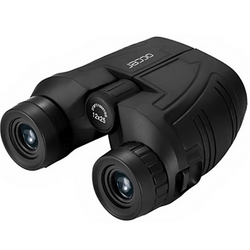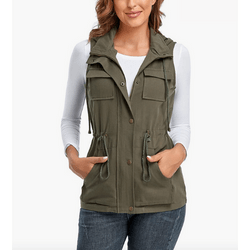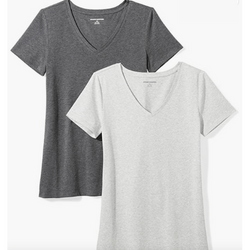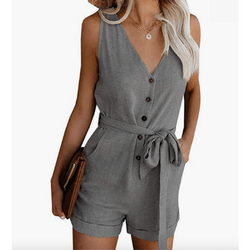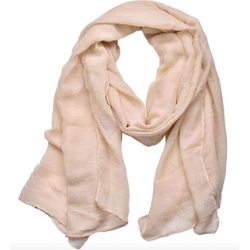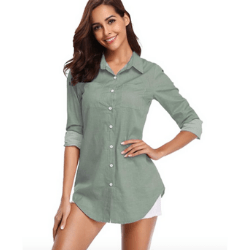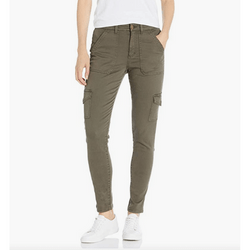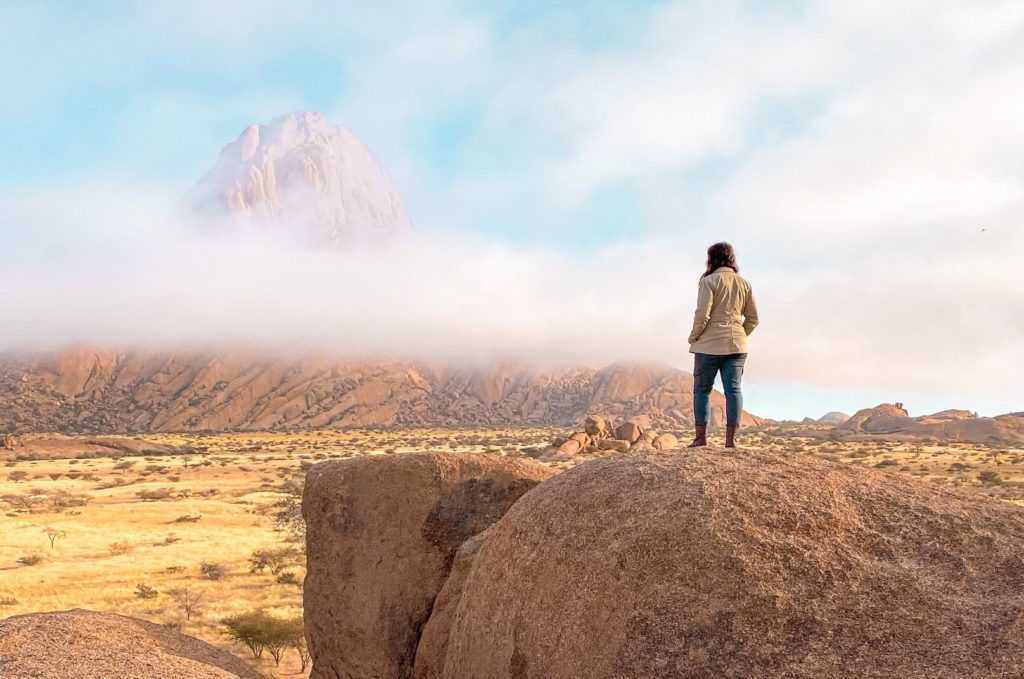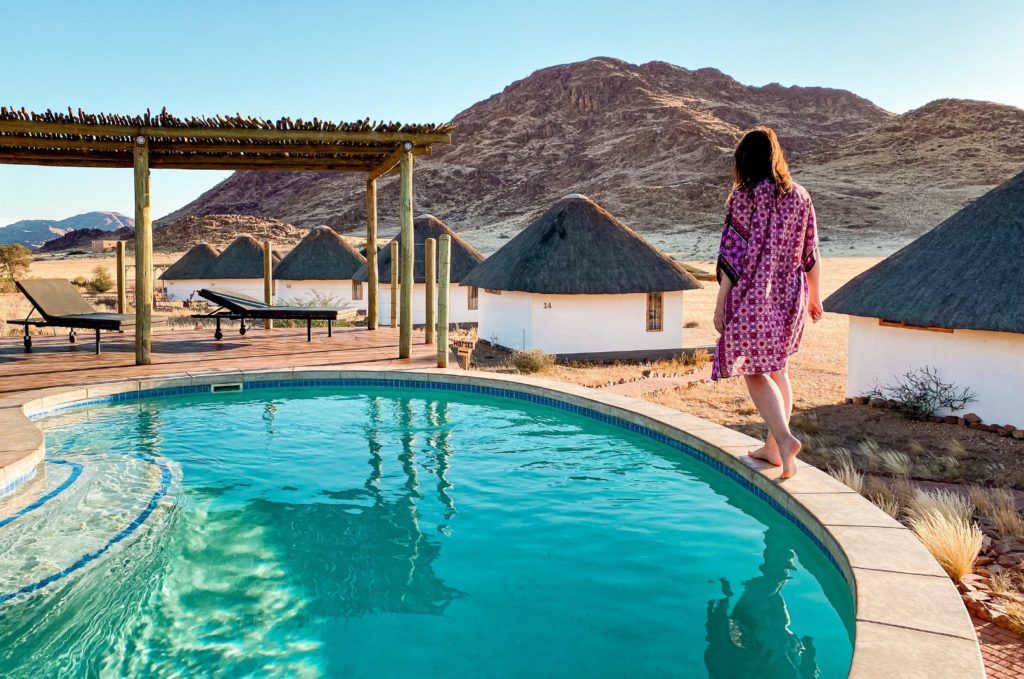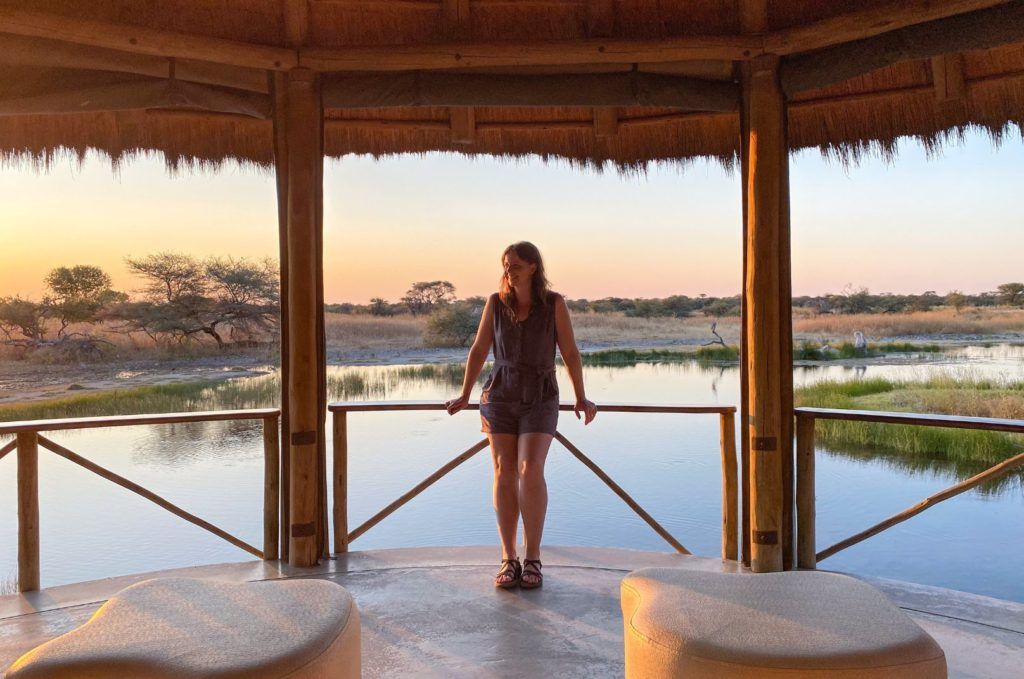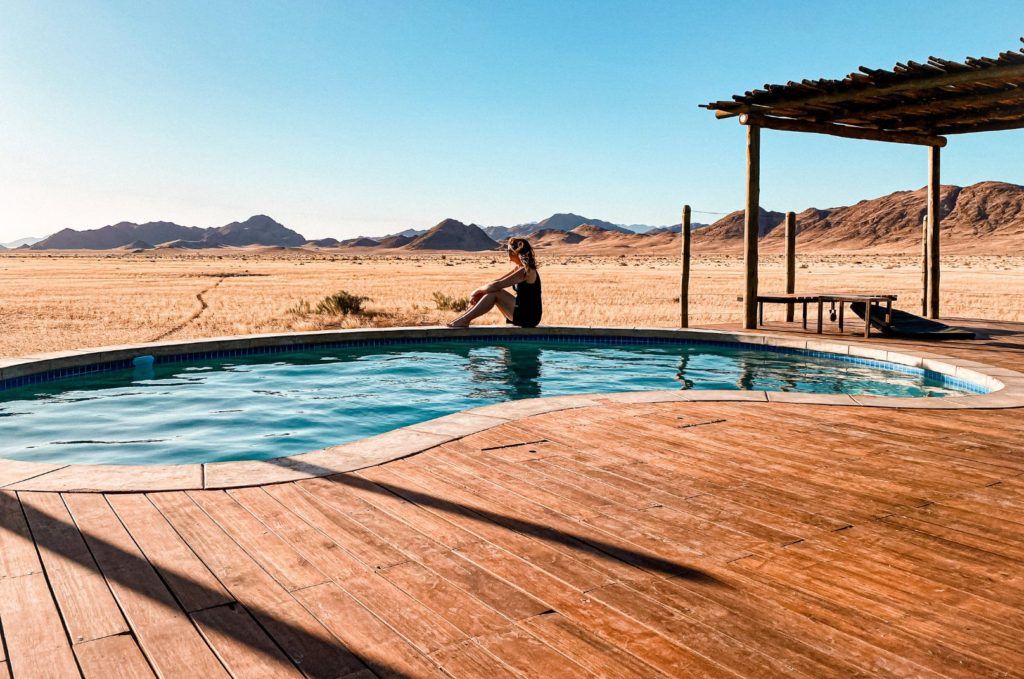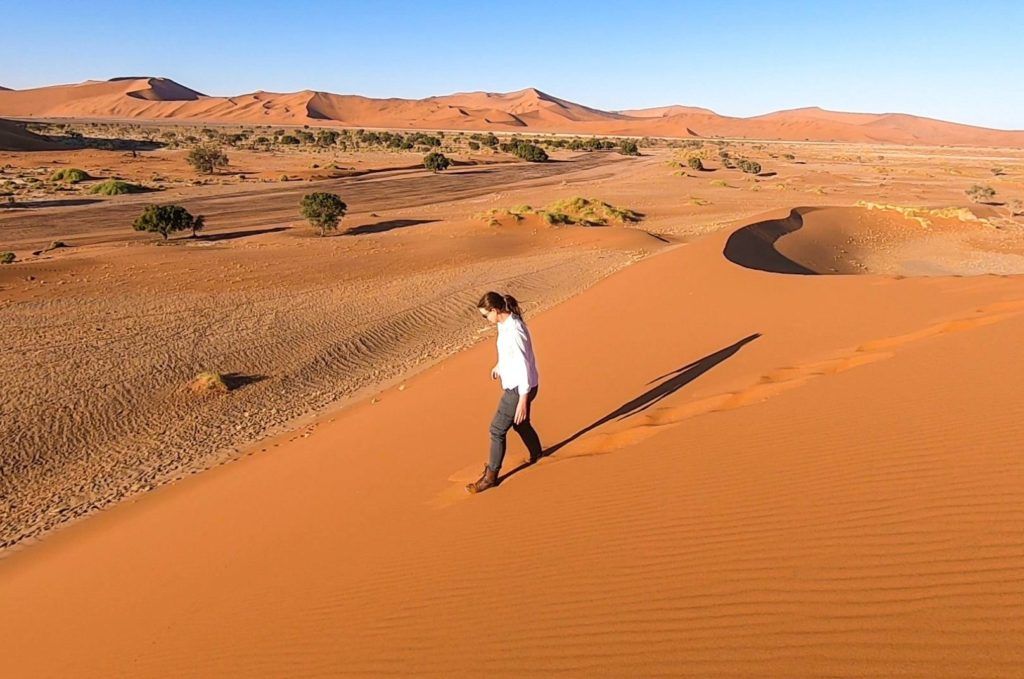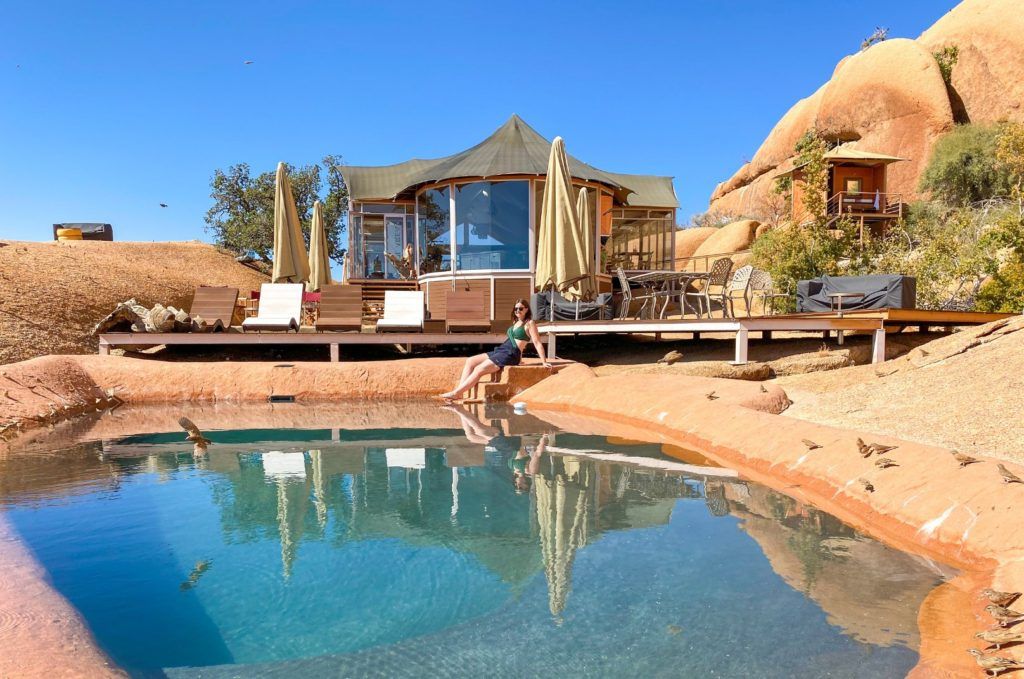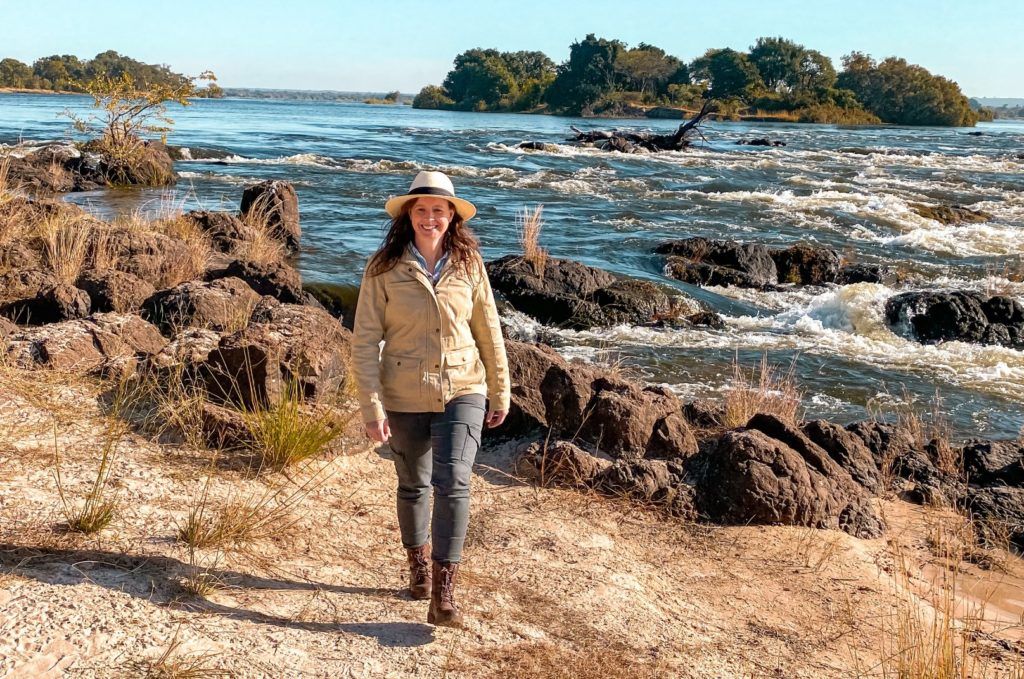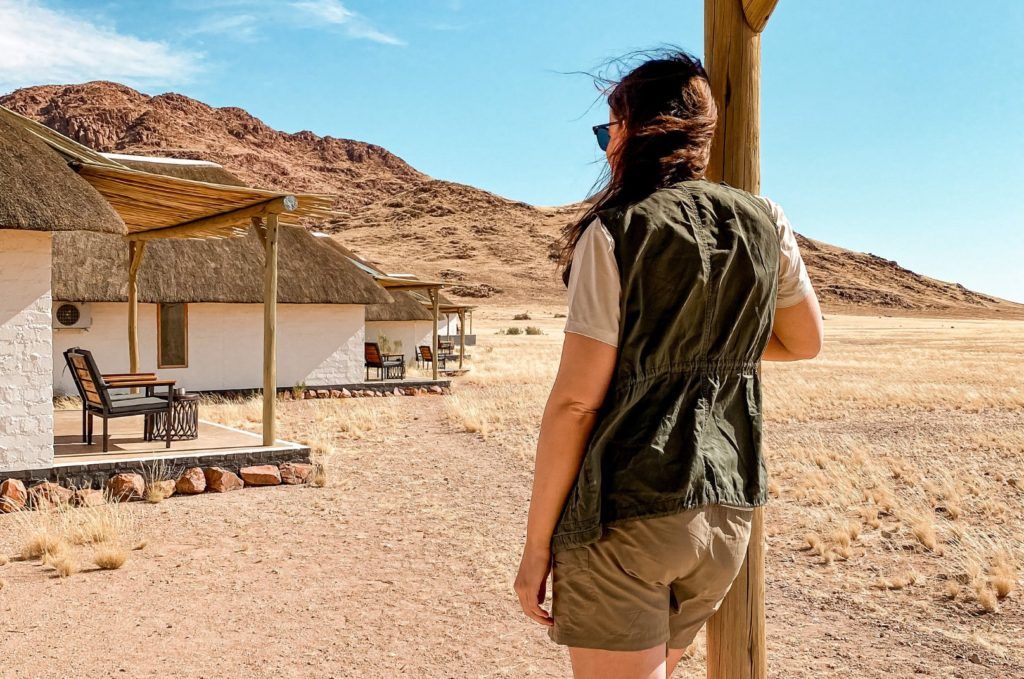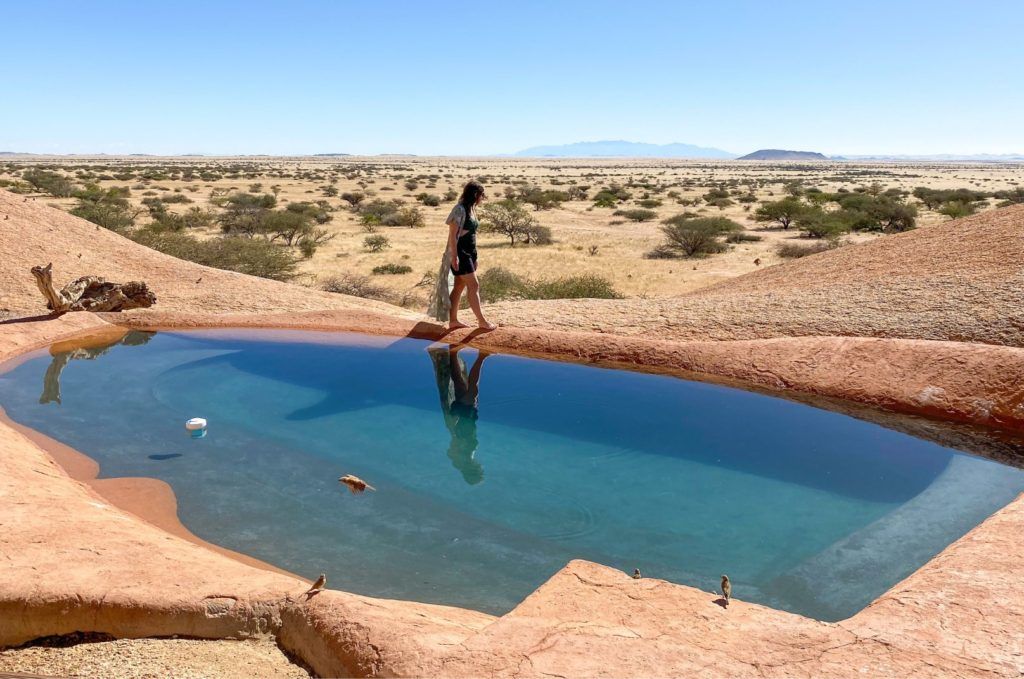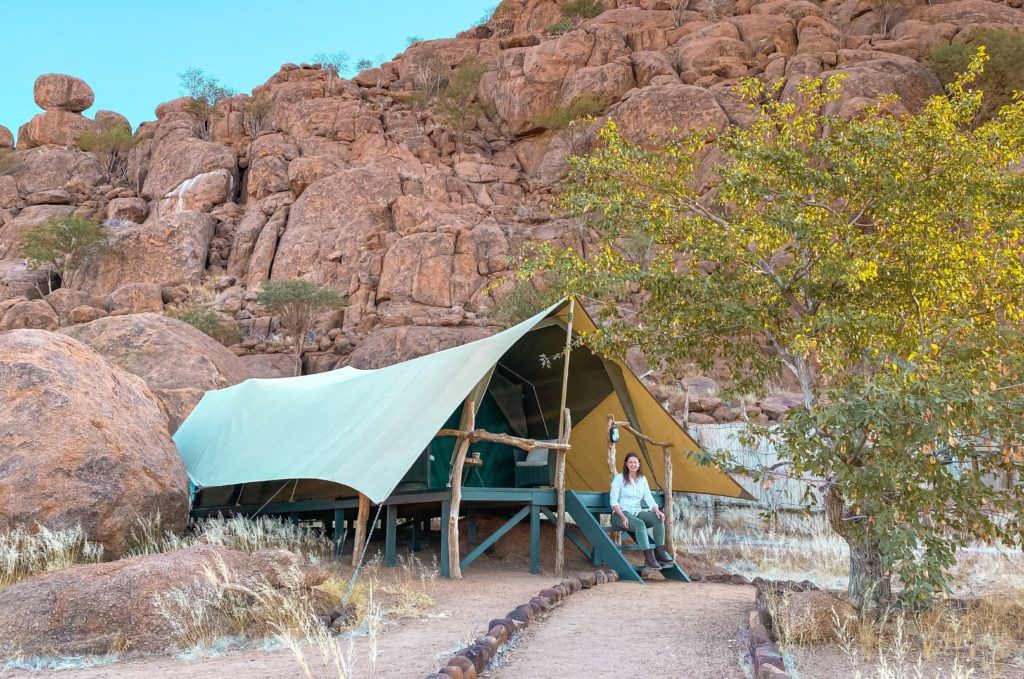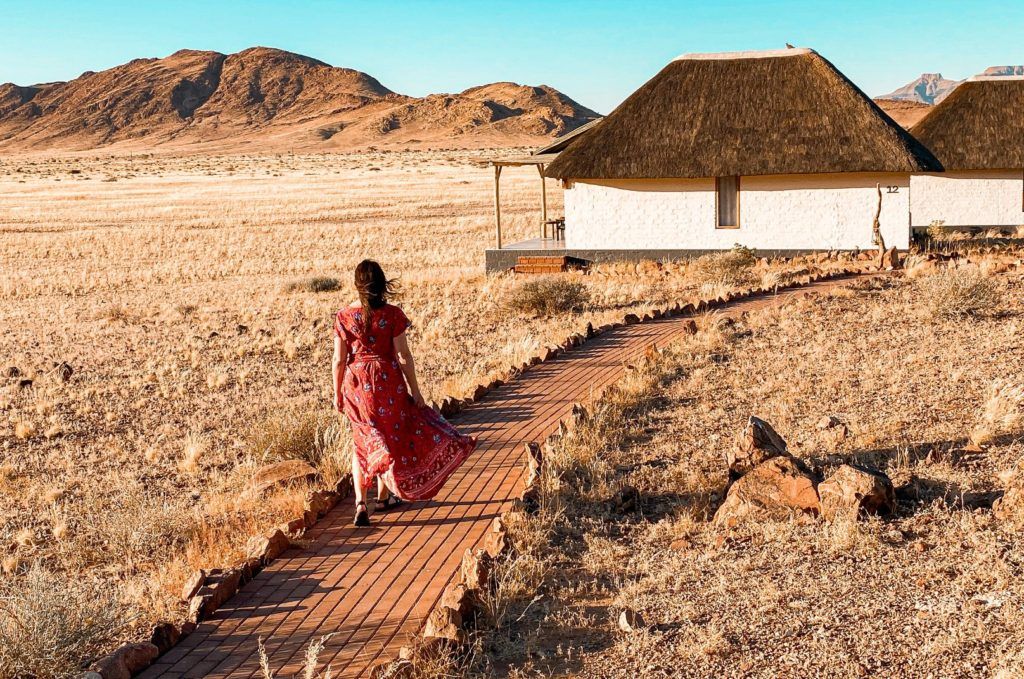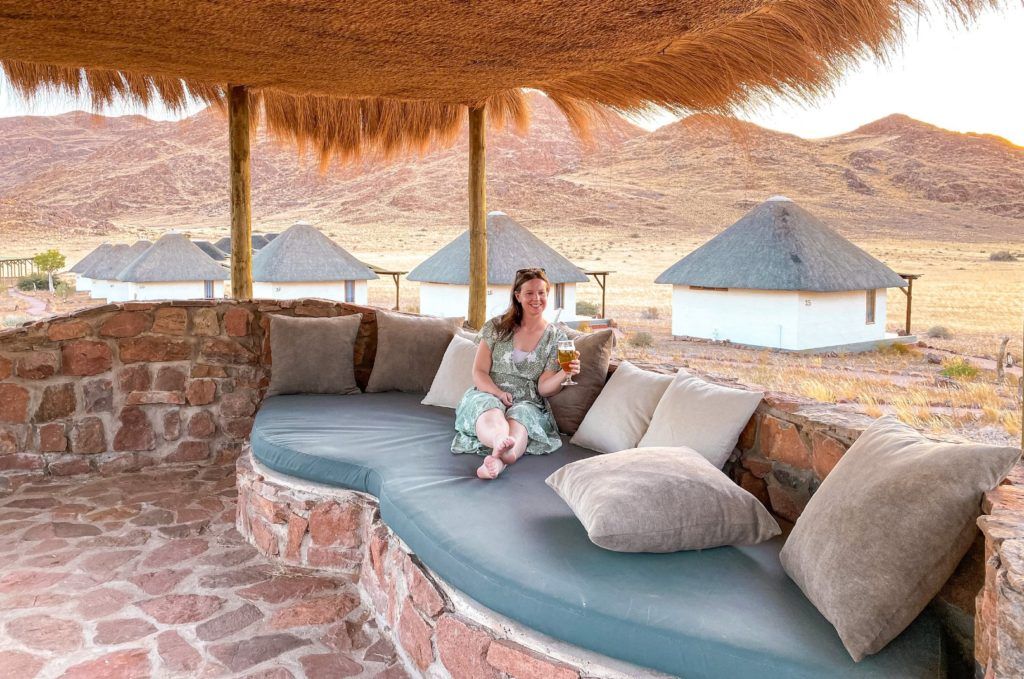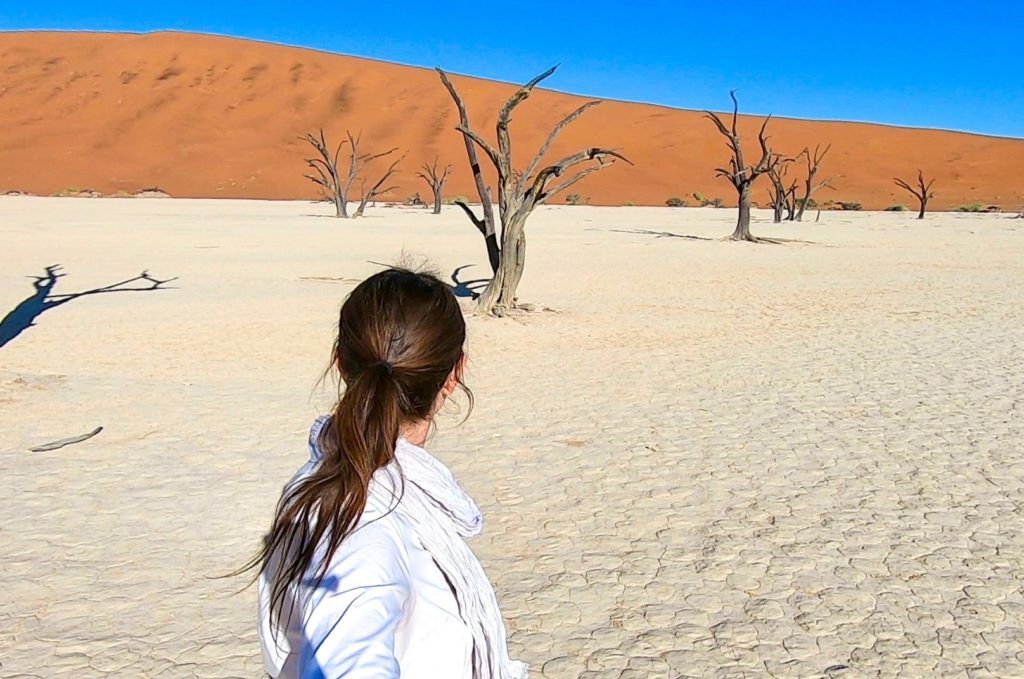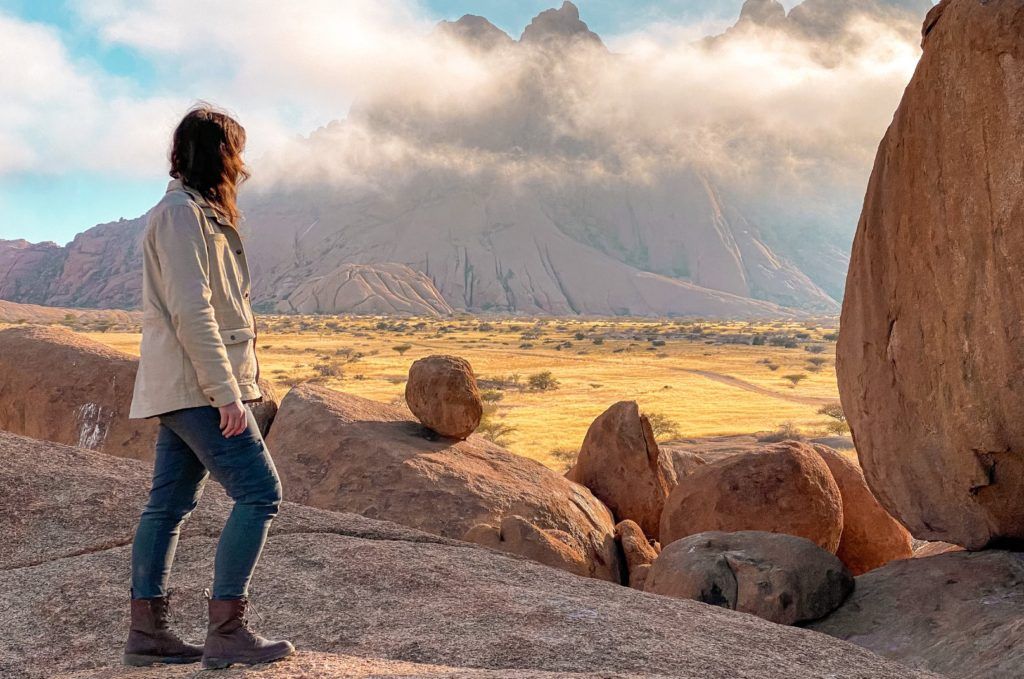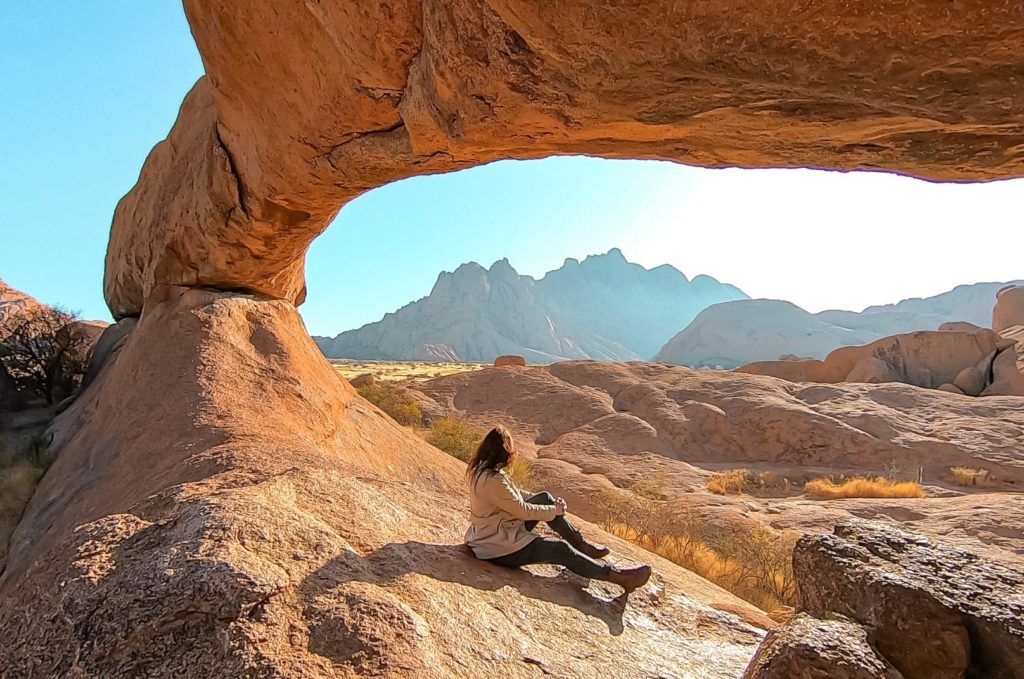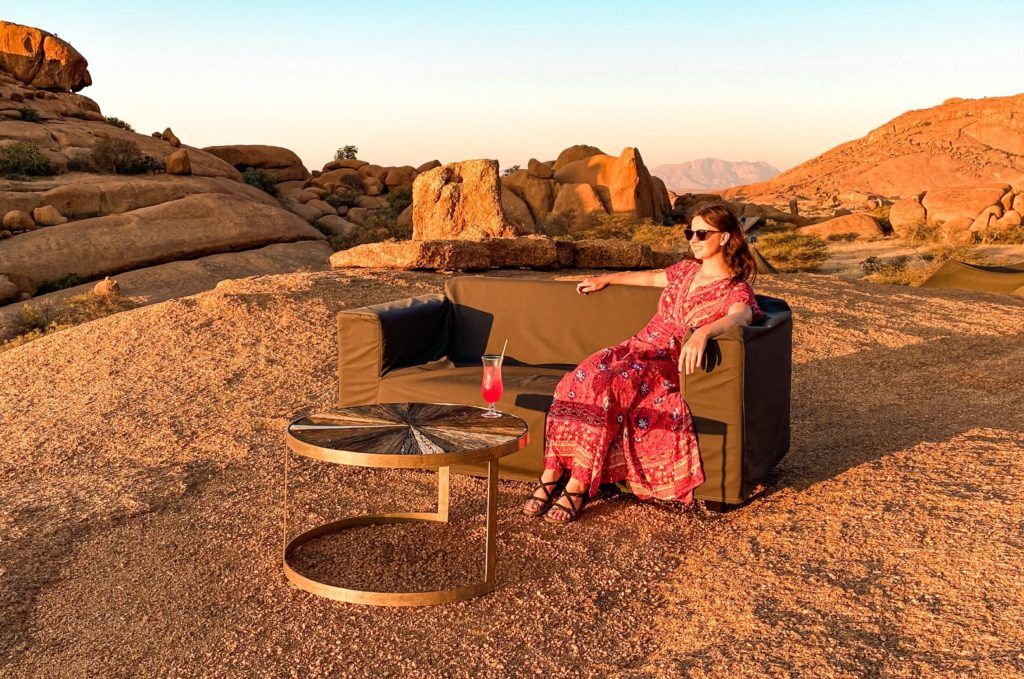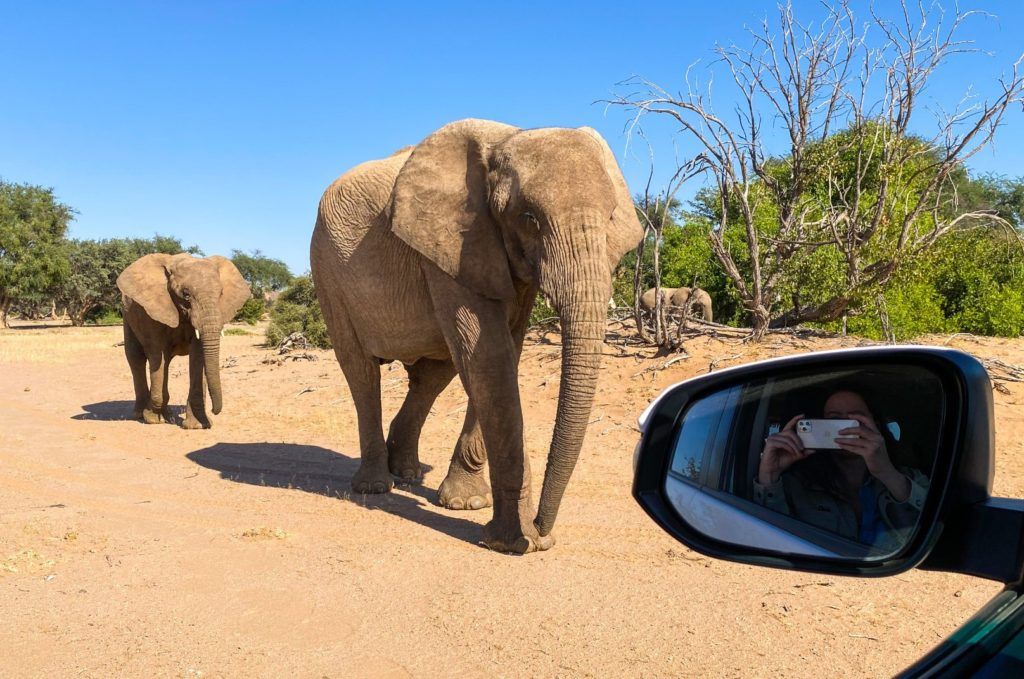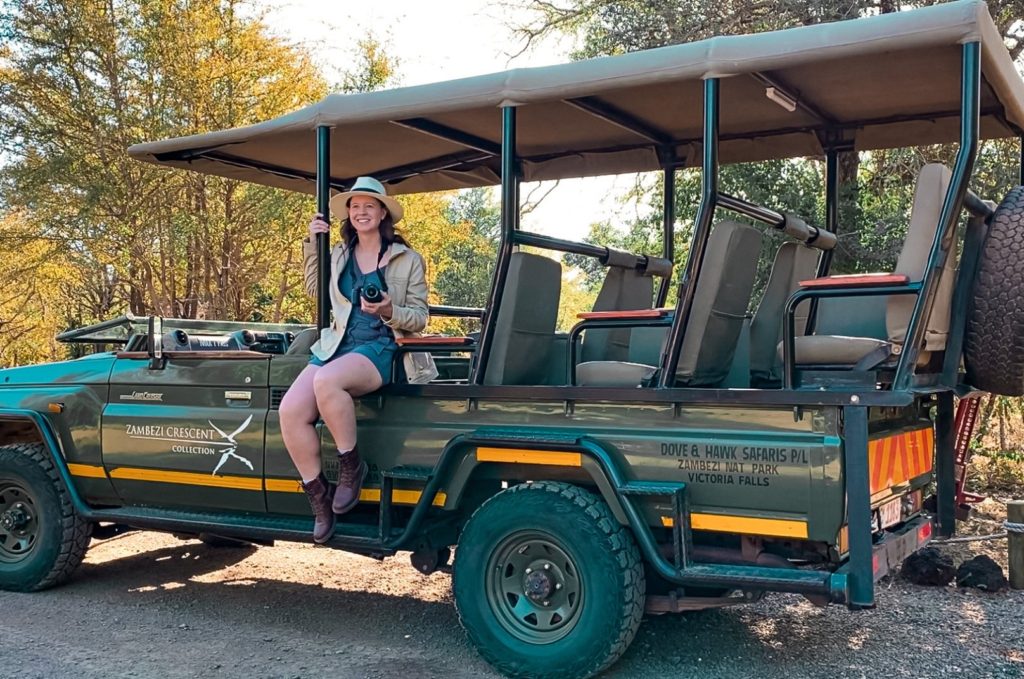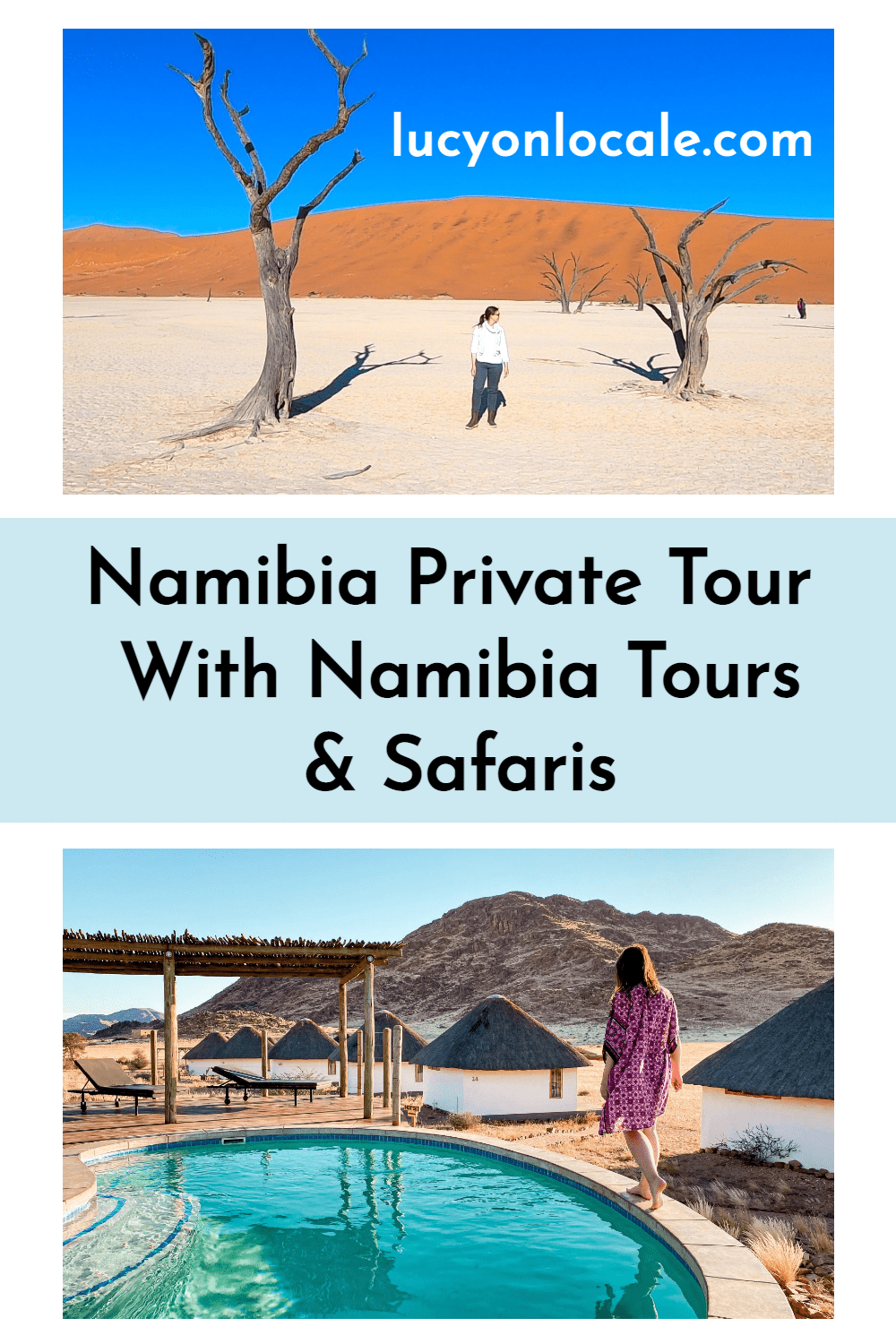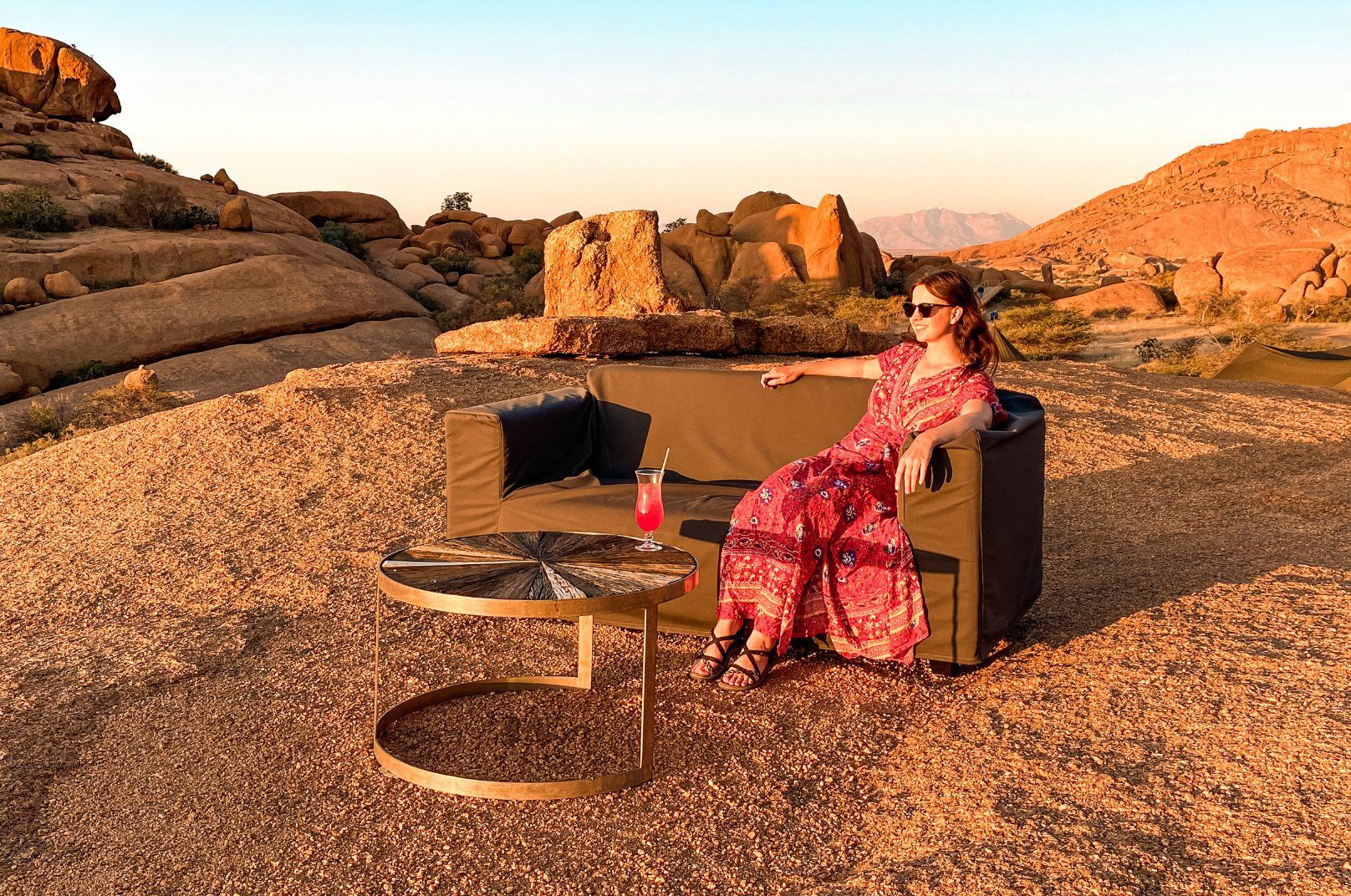
When I visited Namibia, I used Namibia Tours & Safaris to plan and book my two-week road trip through this extraordinary, remote, and otherworldly country. I opted for a Namibia private tour, but this company can also help you plan a fly-in, group, or self-driving trip.
The Ultimate Namibia Travel Guide
Namibia Tours & Safaris can also help you plan trips to Botswana, Zambia, Zimbabwe, and South Africa! So this company can be a one-stop-shop for all your safari needs.
Here’s why Namibia Tours & Safaris is the best company to plan your Namibia private tour!

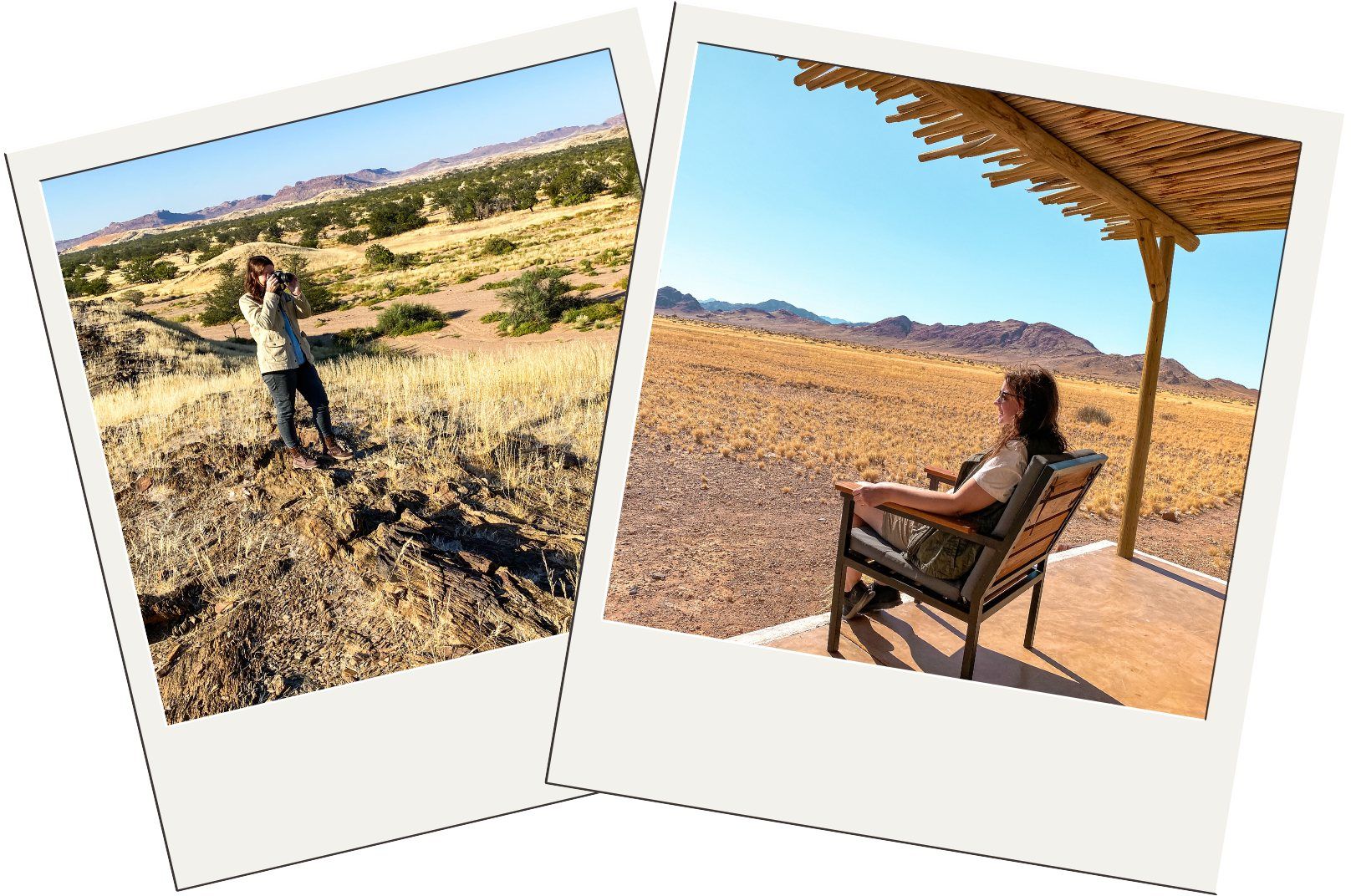
About Namibia Tours & Safaris
Namibia Tours & Safaris creates personalized, custom safari itineraries for group, private, self-driving, or fly-in safaris. They can even help you plan a trip that combines all these types of travel!
Because Namibia Tours & Safaris is locally owned and operated, everyone you speak, email, or travel with will be a local who’s been everywhere you want to go and has test-run everything you want to do.
This company will plan your entire trip from start to finish, and they’ll go the extra mile when booking your accommodation, tours, activities, transport, regional flights, dining reservations, and anything else you want on your itinerary.
And remember, you don’t have to book a private tour to use Namibia Tours & Safaris. If you want to do a self-drive safari (which Namibia is PERFECT for), I still recommend using Namibia Tours & Safaris to book your rental car and coordinate your lodging.
This way, if anything goes wrong at any point on your trip, you can always contact Namibia Tours & Safaris for 24/7 help and support!


My Tour Experience
My Tour Experience
When I started planning my trip to Namibia, I already had an itinerary and specific accommodations in mind. Namibia Tours & Safaris took my ideas and preferences and helped me develop an even better itinerary than I could have created on my own.
The experts at Namibia Tours & Safaris know precisely how long it will take to get from one place to another. They also know how long you need at each destination to fully appreciate the wildlife, experiences, and lodging.
Because I was traveling solo, I opted to hire a private guide and driver, Eric, and this is one of the best travel investments I’ve ever made!
I had Eric one-on-one to myself for my entire two-week trip, so I got the most personalized, local, and authentic experience you can have in Namibia.
Eric knew people at every safari lodge we visited, so I got room upgrades, food credits, and priority activity bookings. Plus, I had a traveling companion who went above and beyond to ensure every trip detail exceeded my expectations.
I could’ve driven myself through Namibia, but having Eric drive gave me HUGE peace of mind. Plus, this allowed me to fully enjoy the vastness and beauty of Namibia’s landscapes.

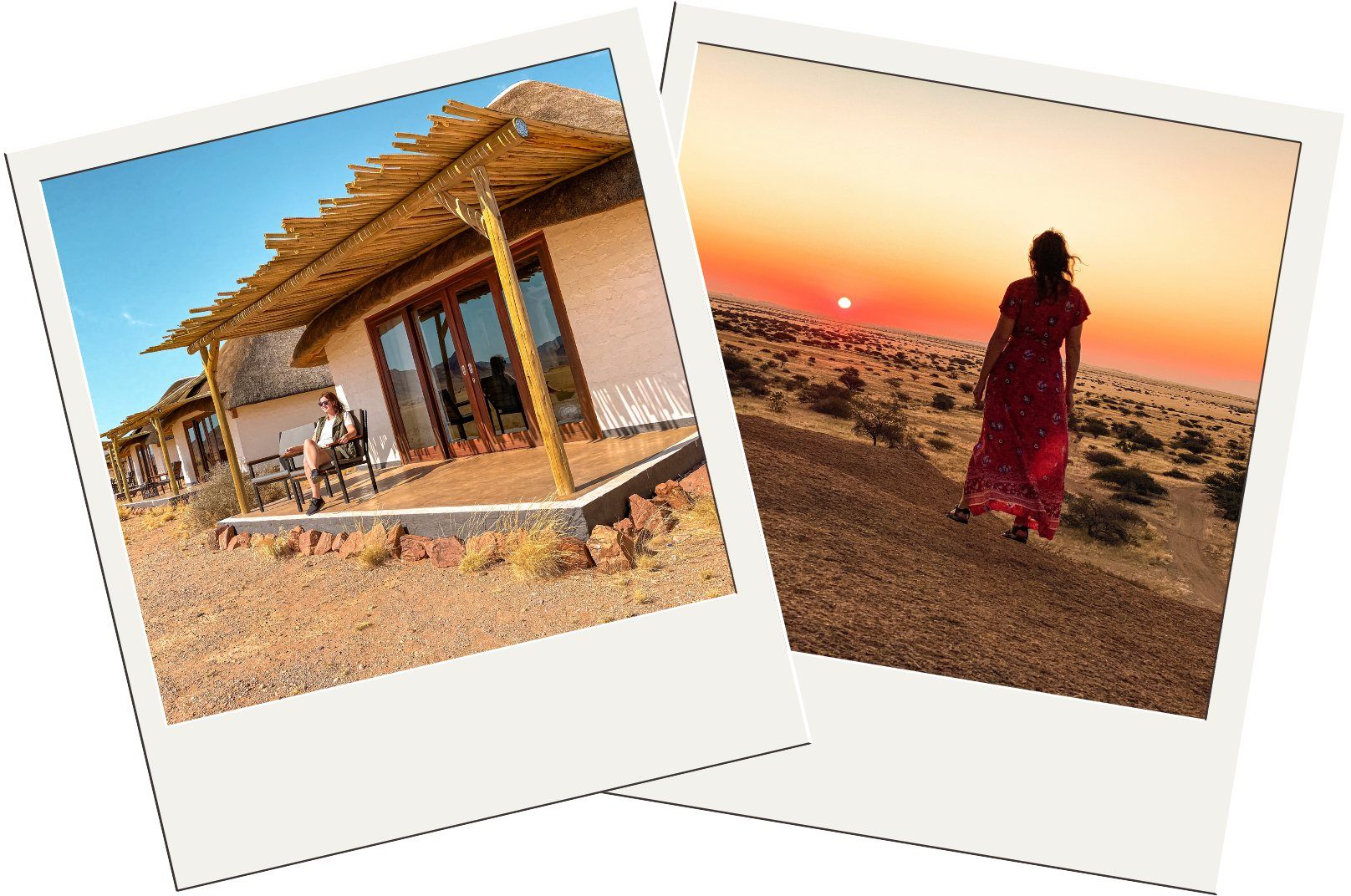
Arranging Transport
Namibia is a large country (about twice as big as California), so it takes several hours to drive between destinations. A road trip is the best way to see the country, and Namibia Tours & Safaris will help you plan your itinerary to account for the long driving distances.
I lost count of how many people I met during my trip who hadn’t built enough travel time in their itinerary. So they didn’t have time to enjoy the activities, wildlife, and accommodations at each stop.
If you want to visit the Skeleton Coast, a fly-in safari is your best bet, which you can combine with a driving safari to other places in Namibia. And you’ll definitely want to use Namibia Tours & Safaris to coordinate this for you!

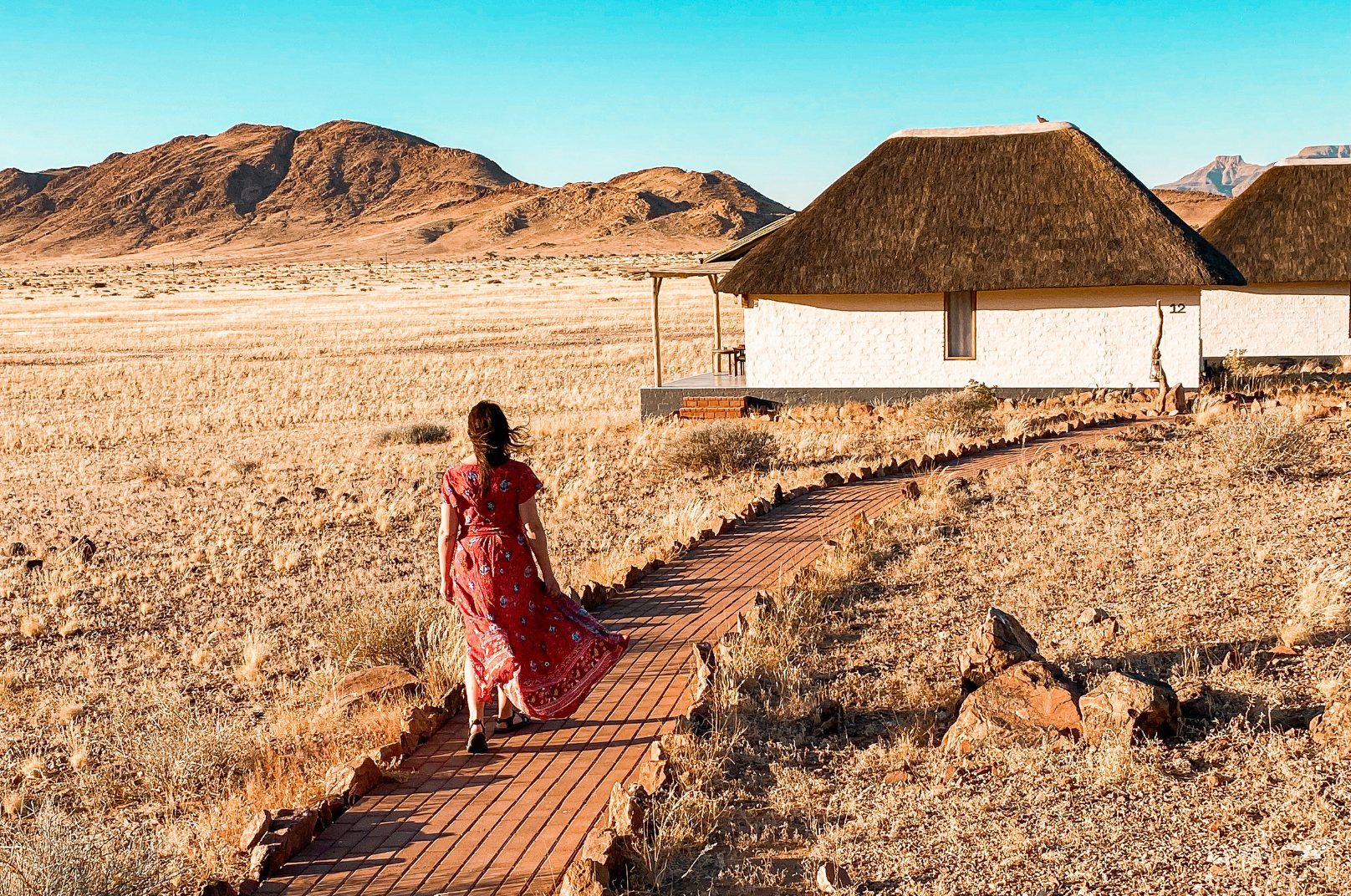
Booking Lodges
Namibia has every type of lodging, from treehouses and glamping tents to luxury bungalows and rustic campsites. So I’ve rounded up the best safari lodges in Namibia.
If you want to camp along your route, I recommend booking campsites in advance because this is a VERY popular way to travel in Namibia, especially for locals.
While budget and location are important, there are more things you need to consider when selecting a safari camp. So read through my step-by-step guide to finding the perfect safari lodge for your trip.
Unlike hotels where you come and go, a safari lodge will be where you spend most of your time at each stop. Your accommodations will set the tone for your entire trip, so before you commit, do your due diligence!
Namibia Tours & Safaris is an invaluable resource for choosing the best accommodations for your itinerary and preferences!

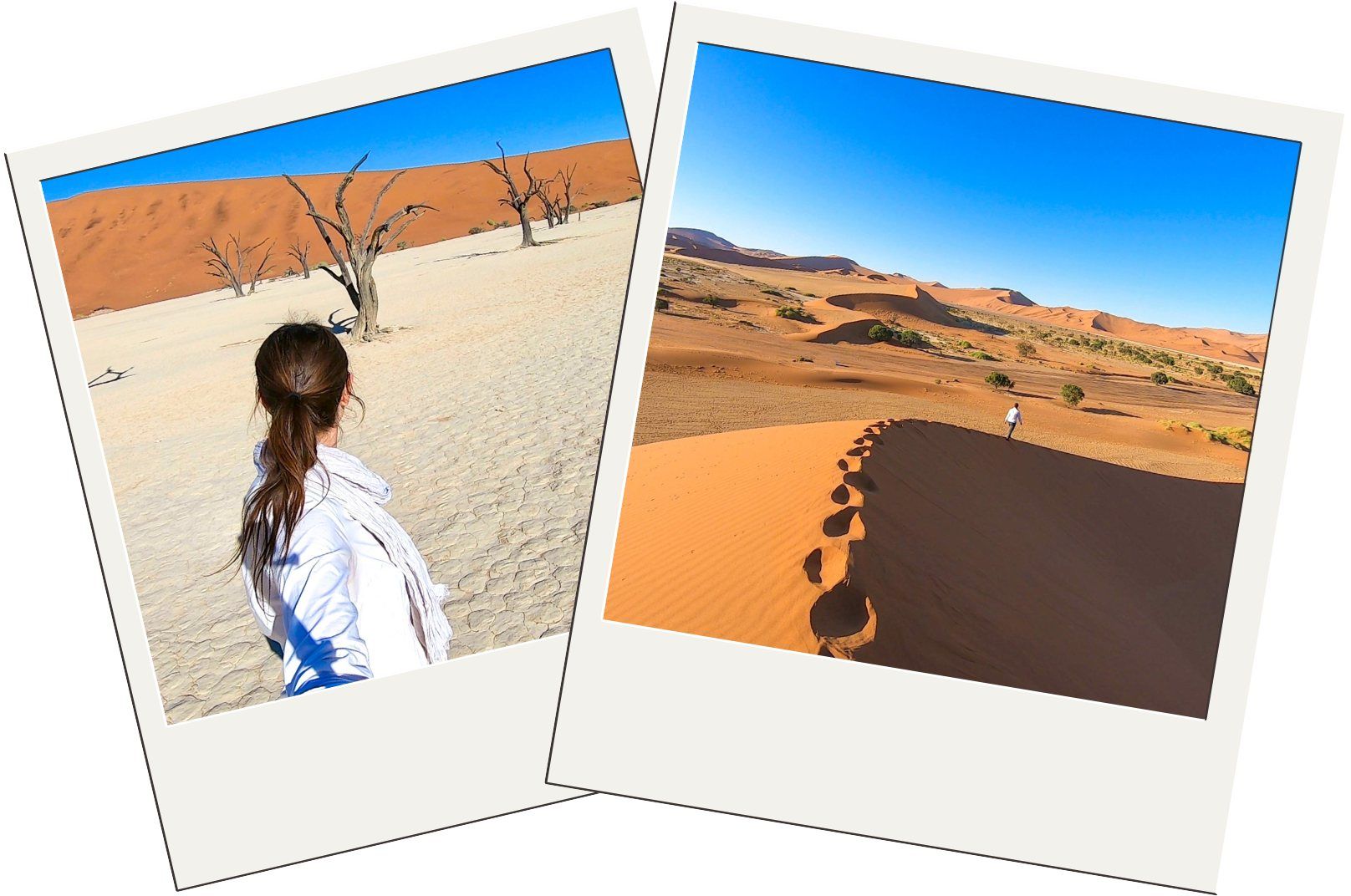
Planning Your Itinerary
I’ve rounded up the best places to visit in Namibia. You’d probably need a month to see all the destinations on this list, so I’d prioritize Sossusvlei, Etosha National Park, Spitzkoppe, The Caprivi Strip, The Skeleton Coast, and Okonjima Nature Reserve (in that order).
But even focusing on my top six destinations, you’d still need two or three weeks to visit them. So I’ve created recommended Namibia itineraries for various travel times and preferences.
Once you have an outline for your trip, Namibia Tours & Safaris will help refine your itinerary to create the perfect trip for you!

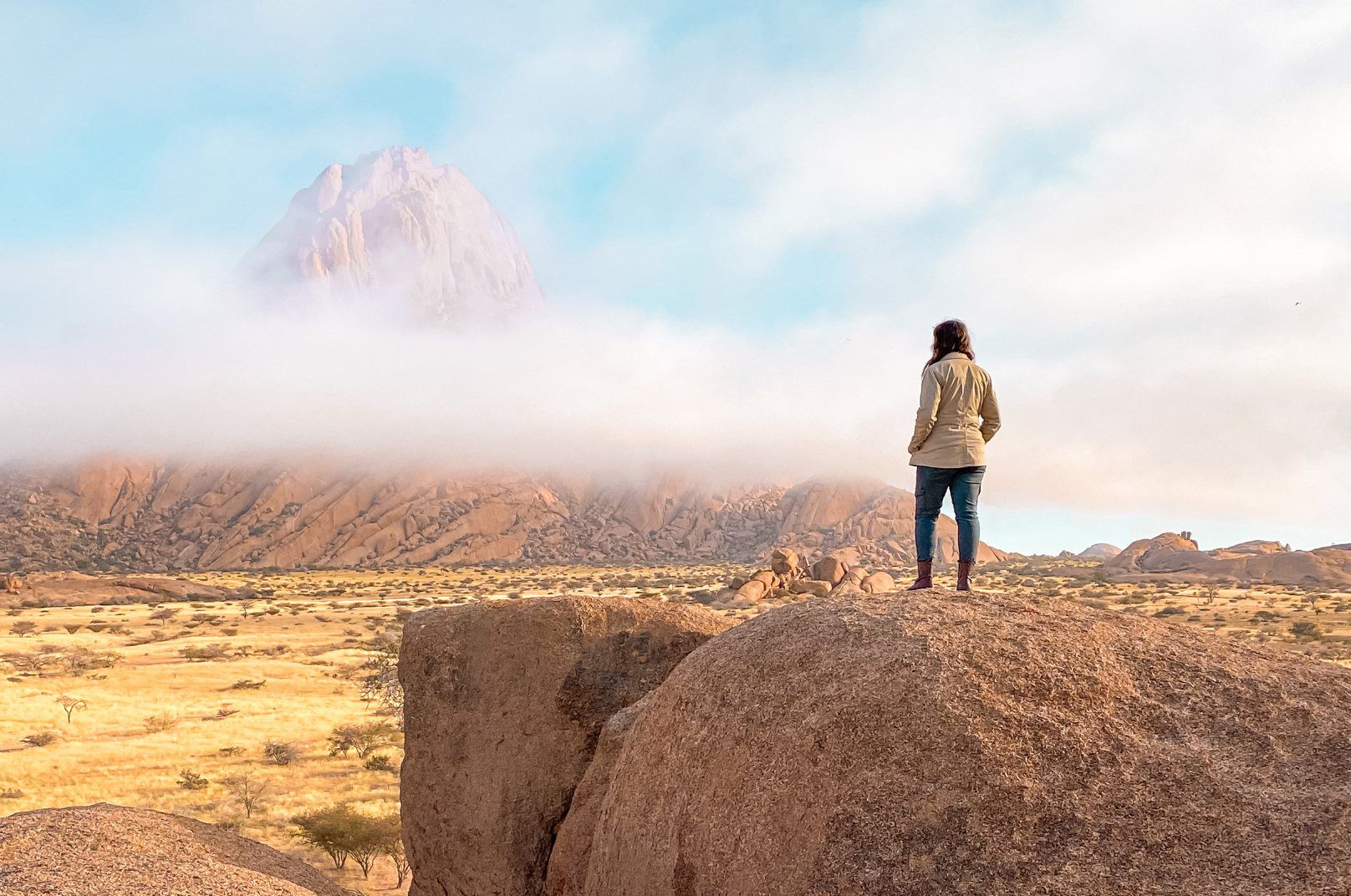
Ethical Travel in Namibia
Like all African safari destinations, Namibia is a fragile ecosystem of local populations and endangered wildlife. So you need to plan an ethical trip to Namibia.
Plan an Ethical African Safari
Using Namibia Tours & Safaris is the best way to travel responsibly in Namibia. They’ll ensure you use local guides and operators, stay in environmentally-friendly accommodations, and only have ethical animal encounters.

Shop My Safari Essentials

Will you consider using Namibia Tours & Safaris to plan your Namibia private tour? Share with us in the comments!

For Planning The Rest Of Your Namibia Trip

Recommended Tours in Namibia

Frequently Asked Questions
How much is a safari in Namibia?
The answer to this question varies based on the type of safari, accommodation, and destination you choose, so I will break it down for you in this post.
Safaris are designed to fund conservation efforts and maintain wildlife reserves, so remember that many of your safari costs are going to worthy causes!
As a general rule of thumb, you should plan on spending a minimum of $1,000 per night per person at an all-inclusive safari camp.
This number might give you sticker shock, but let’s break down what this $1000 covers: all food, lodging, drinks, activities, guides, transfers, and conservation fees. So the only additional costs would be your flights and tips.
You get what you pay for on safari, so don’t skimp!
While all-inclusive resorts can be a budgeting mistake for some types of trips, this isn’t the case with an African safari. There is very little you can do on your own on a safari, and even if you did pay for things à la carte – it will add up to around the same price.
I’ve consistently found it’s better and often more economical go all-inclusive.
The one exception is if you’re doing a driving safari where you’ll only spend one or two nights at each stop. In this case, an à la carte or half-board rate might be a better financial choice.
If you’re driving and guiding yourself, you don’t want to pay as if you were using a safari lodge’s vehicles and guides. And if you’re moving accommodations every other day, chances are you’ll be eating some of your meals on the road, so an all-inclusive rate could mean you’d be paying for meals you won’t get to eat.
How do private tours work?
When I visited Namibia, I used Namibia Tours & Safaris to plan and book my two-week road trip through this extraordinary, remote, and otherworldly county. I opted for a Namibia private tour, but this company can also help you plan a fly-in, group, or self-driving trip.
Namibia Tours & Safaris creates personalized, custom safari itineraries for group, private, self-driving, or fly-in safaris. They can even help you plan a trip that combines all these types of travel!
Because Namibia Tours & Safaris is locally owned and operated, everyone you speak, email, or travel with will be a local who’s been everywhere you want to go and has test-run everything you want to do.
This company will plan your entire trip from start to finish, and they’ll go the extra mile when booking your accommodation, tours, activities, transport, regional flights, dining reservations, and anything else you want on your itinerary.
And remember, you don’t have to book a private tour to use Namibia Tours & Safaris. If you want to do a self-drive safari (which Namibia is PERFECT for), I still recommend using Namibia Tours & Safaris to book your rental car and coordinate your lodging.
This way, if anything goes wrong at any point on your trip, you can always contact Namibia Tours & Safaris for 24/7 help and support!
What is a private guided tour?
When I started planning my trip to Namibia, I already had an itinerary and specific accommodations in mind. Namibia Tours & Safaris took my ideas and preferences and helped me develop an even better itinerary than I could have created on my own.
The experts at Namibia Tours & Safaris know precisely how long it will take to get from one place to another. They also know how long you need at each destination to fully appreciate the wildlife, experiences, and lodging.
Because I was traveling solo, I opted to hire a private guide and driver, Eric, and this is one of the best travel investments I’ve ever made!
I had Eric one-on-one to myself for my entire two-week trip, so I got the most personalized, local, and authentic experience you can have in Namibia.
Eric knew people at every safari lodge we visited, so I got room upgrades, food credits, and priority activity bookings. Plus, I had a traveling companion who went above and beyond to ensure every trip detail exceeded my expectations.
I could’ve driven myself through Namibia, but having Eric drive gave me HUGE peace of mind. Plus, this allowed me to fully enjoy the vastness and beauty of Namibia’s landscapes.
How much does a 10 day safari cost?
The answer to this question varies based on the type of safari, accommodation, and destination you choose, so I will break it down for you in this post.
Safaris are designed to fund conservation efforts and maintain wildlife reserves, so remember that many of your safari costs are going to worthy causes!
As a general rule of thumb, you should plan on spending a minimum of $1,000 per night per person at an all-inclusive safari camp.
This number might give you sticker shock, but let’s break down what this $1000 covers: all food, lodging, drinks, activities, guides, transfers, and conservation fees. So the only additional costs would be your flights and tips.
You get what you pay for on safari, so don’t skimp!
While all-inclusive resorts can be a budgeting mistake for some types of trips, this isn’t the case with an African safari. There is very little you can do on your own on a safari, and even if you did pay for things à la carte – it will add up to around the same price.
I’ve consistently found it’s better and often more economical go all-inclusive.
The one exception is if you’re doing a driving safari where you’ll only spend one or two nights at each stop. In this case, an à la carte or half-board rate might be a better financial choice.
If you’re driving and guiding yourself, you don’t want to pay as if you were using a safari lodge’s vehicles and guides. And if you’re moving accommodations every other day, chances are you’ll be eating some of your meals on the road, so an all-inclusive rate could mean you’d be paying for meals you won’t get to eat.
What should I be careful of in Namibia?
Driving Tips for Namibia:
When you look at a road map of Namibia, you’ll see that many roads are marked with a D or C. Most of the time, these are dirt roads, and some of them are ROUGH.
So rent a 4×4 vehicle because many of Namibia’s best locations are only reachable via off-roads. Even if you stay primarily on the main routes, it’s good to have the option to go wherever you want.
The emergency number in Namibia is 999.
If you drive yourself around Namibia, you MUST be able to plug and change a tire. And I don’t just mean watching YouTube videos. I mean actually practicing these skills because YOU WILL NEED TO DO BOTH THESE THINGS.
Ensure your rental car has at least two spare tires, tire plugs, a roadside emergency kit, and a first aid kit.
Drive cautiously, especially in the mornings and evenings. Wildlife is EVERYWHERE, and it’s easy for your car to drift on the gravel roads if you’re going too fast.
Gas stations can be few and far between. So any time you see a gas station, fill up.
Cash is king in Namibia. ATMs aren’t always easy to find, and remote safari lodges don’t have reliable networks for credit card transactions. So make sure you can always cover your costs with cash. The currency in Namibia is the Namibian Dollar. 1 Namibian Dollar (N$ or NAD) is equal to about £.04 British Pounds, $0.06 U.S., and €0,05 Euros.
Cell service is unreliable in Namibia. So always have a GPS, satellite phone, and paper map with you.
Layering is key to being prepared for Namibia’s weather. It can go from ninety to thirty degrees in one day, so ensure you’ll be able to stay comfortable in a range of conditions. Also, remember that Namibia is a desert country, so always have sunscreen, sunglasses, moisturizer, and lip balm with you.
Do you need a 4x4 to tour Namibia?
Yes! When you look at a road map of Namibia, you’ll see that many roads are marked with a D or C. Most of the time, these are dirt roads, and some of them are ROUGH.
So rent a 4×4 vehicle because many of Namibia’s best locations are only reachable via off-roads. Even if you stay primarily on the main routes, it’s good to have the option to go wherever you want.
How many days do you need in Namibia?
If you only have a week in Namibia, I recommend spending two nights in Sossusvlei, two nights in Spitzkoppe, and three nights in Etosha National Park.
If you have two weeks, add two nights a Okonjima Nature Reserve, two nights in Twyfelfontein, one night in Swakopmund and Walvis Bay, and two nights in the Skeleton Coast.
If you have three weeks, add The Caprivi Strip.
What is the best time of year to go to Namibia?
Namibia is a desert country – one of the driest places in Sub-Saharan Africa. July – October are the driest months of the year and the peak travel season. Wildlife will gather by the hundreds around water holes, meaning these months have some of the best game viewings anywhere in Africa. These months have the highest prices and crowds, so book your lodge and tours as far in advance as possible. In July and August, daytime temperatures average in the 60s and 70s, and nighttime temperatures can drop below freezing, so bring layers. September and October nights are warmer, but you’ll still want a jacket.
May and June are the shoulder months. The rains will have stopped, the landscape will be lush, and wildlife will be easily visible at waterholes (though not as high a concentration as in July – October). Travel costs will be less during these months, and the safari lodges and destinations won’t be overrun with tourists. Daytime temperatures range from the 60s to 80s, with nighttime temperatures falling below freezing in June, so bring layers for the mornings and evenings.
November, February, and March are the rainy and off-season months. It will be wet and humid, and wildlife will be hard to see because they won’t need to gather at watering holes. You can score some great accommodation deals during these months, though, and it can feel like you have the entire country to yourself.
December, January, and April are the best months for bird watching. These are the months directly after the rainy months, when the weather will be drier, the skies clearer, and the feeding conditions are ideal for water birds. These months have drastic temperature changes from night to day, so bring shorts, pants, short-sleeve shirts, and jackets.

This article about a Namibia private tour with Namibia Tours & Safaris is not a sponsored post, and the thoughts and opinions expressed in this post about a Namibia private tour with Namibia Tours & Safaris are entirely my own. Some of the links in this post about a Namibia private tour with Namibia Tours & Safaris are affiliate links, and, at no cost to you, I may earn a small commission from this article about a Namibia private tour with Namibia Tours & Safaris.
 Travel Shop
Travel Shop Merch
Merch Travel Tips
Travel Tips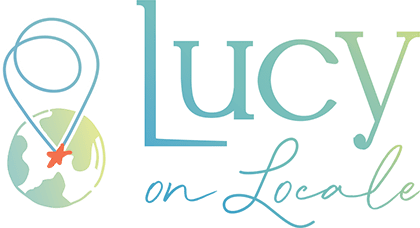
 Photography
Photography Points & Miles
Points & Miles Credit Cards
Credit Cards